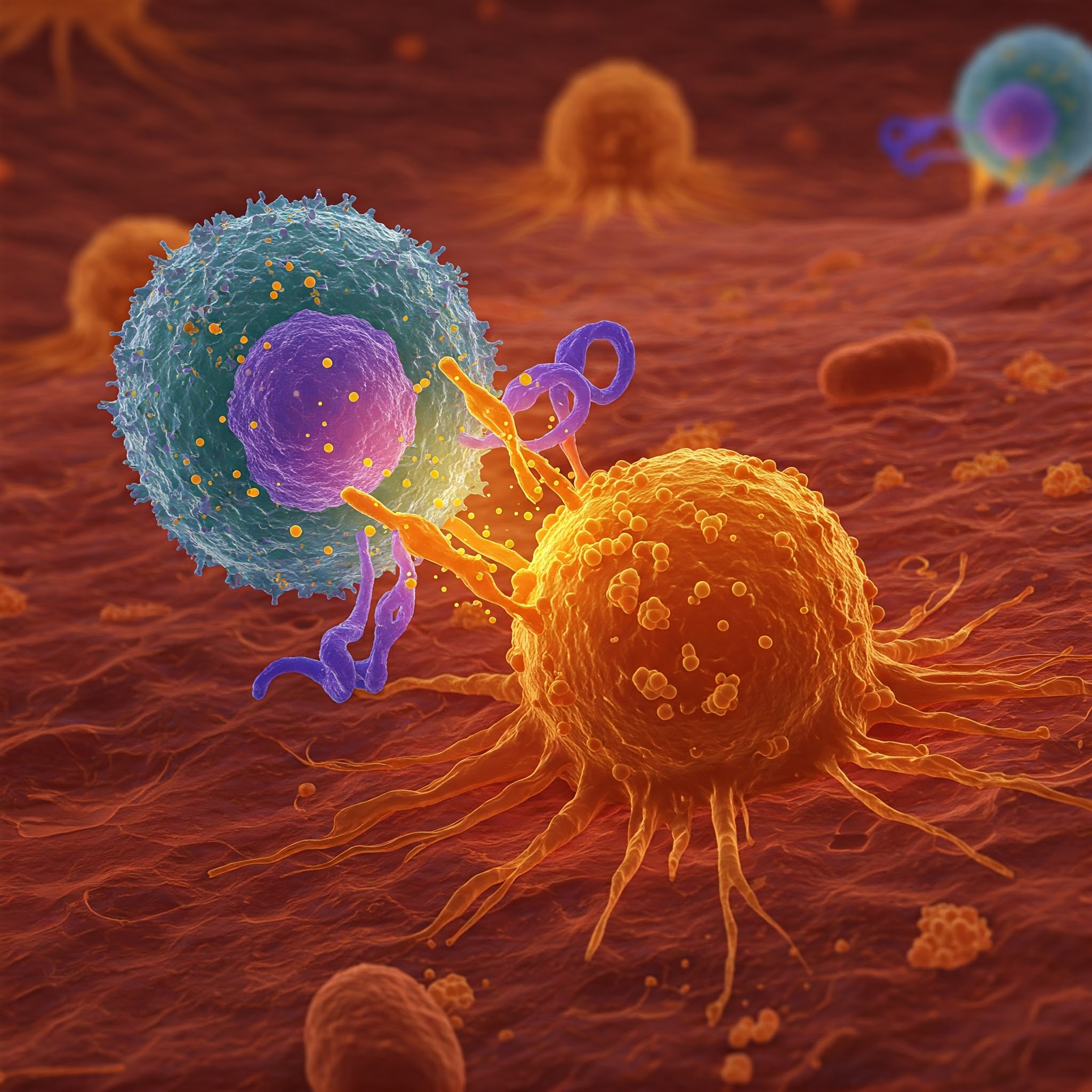A computer model has been created by researchers at the Bloomberg Kimmel Institute for Cancer Immunotherapy and the Johns Hopkins Kimmel Cancer Center to assist researchers in identifying immune cells that fight tumors in lung cancer patients receiving immune checkpoint inhibitor treatment.
Their findings were published in the journal Nature Communications.
We have developed a way to identify the cells directly targeted by immune checkpoint inhibitors, and if we can identify them, we can study them,
If we can study them, that means we can identify better biomarkers and better targets for combination immunotherapy.
Kellie Smith, Ph.D
PD-1 inhibitors and other immune checkpoint inhibitors can be used to treat dozens of different forms of cancer. These ground-breaking treatments function by releasing T cells, which are immune cells that kill tumors and are inhibited by the protein PD-1. By reactivating the patient’s T cells, PD-1 inhibitors improve the immune system’s ability to combat cancer. However, not every patient responds to these treatments, and in order to create better treatments for nonresponders, scientists must understand why.
Tumor-active T cells are very important to a patient’s response to therapy, but they are difficult to find.
Zhen Zeng, Ph.D
In 2018, Smith and her colleagues published the first description of the MANAFEST technology (Mutation-Associated NeoAntigen Functional Expansion of Specific T Cells) in the journal Cancer Immunology Research. They used a multi-year, multi-million dollar technique that coupled MANAFEST with single-cell sequencing to find these unusual immune cells in six lung cancer patients. According to the original study, the immune cells stimulated by immunotherapy had a similar gene expression profile. Zeng, Smith, and their colleagues expanded on those findings in the new study to create MANAscore.
Our model allows us to skip a time-consuming and expensive process to identify the cells targeted by immunotherapy, and will help us identify what distinguishes who will respond to these therapies.
We’re not the first to come up with one of these models, but what sets ours apart is that it uses only three genes, while the most commonly used model requires more than 200 genes. Ours is simpler and easier to use.
Kellie Smith, Ph.D
The study also discovered important distinctions between the T cells activated in the tumors of patients who react to immune checkpoint therapy and those who do not. According to Zeng, responding patients have a greater percentage of stem-like memory T cells, which serve as a source of new cells and can differentiate into a variety of potent anti-tumor cells. The stem-like properties may facilitate the T cells’ ability to proliferate into a horde of tumor-fighting cells, which could help explain why patients are more responsive. To validate these findings, more research is required.
The stem-like characteristics of T cells are critical because they enable self-renewal and long-term persistence,
This allows for sustained immune responses and the ability to expand into a robust population of effector T cells when needed.
Zhen Zeng, Ph.D
Meanwhile, the team is developing a clinical test to detect the three-gene signature of immune treatment-responsive T cells using multispectral immunofluorescence panels.
We hope to translate our three-gene signature into a biomarker that clinicians can use to guide cancer care.
Kellie Smith, Ph.D
In order to ascertain whether the close proximity of T cells with the three-gene signature to other immune cell types, such as regulatory T cells, aids in immune response regulation, Zeng is also utilizing their new model.
We want to apply our model to spatial data to learn whether cell-to-cell interactions among tumor-targeting T cells and other cell types affect clinical outcomes.
Zhen Zeng, Ph.D
To find out if MANAscore can be used to patients with various cancer kinds, she is also working with other labs around the nation. The score will be used to help identify responder T cell features particular to a given cancer type. They have developed a library of single-cell sequencing data across cancer kinds.
Source: John Hopkins Medicine
Journal Reference: Zeng, Zhen, et al. “A Minimal Gene Set Characterizes TIL Specific for Diverse Tumor Antigens across Different Cancer Types.” Nature Communications, vol. 16, no. 1, 2025, pp. 1-17, DOI: https://doi.org/10.1038/s41467-024-55059-3.
Last Modified:






